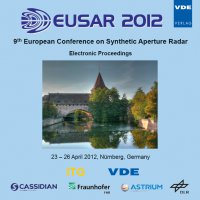Implementation of FULL-POL-SAR in agriculture, forestry and aquaculture as well as for the detection of natural hazards plus natural disaster assessment from air and space in South, East and Pacific Asia
Conference: EUSAR 2012 - 9th European Conference on Synthetic Aperture Radar
04/23/2012 - 04/26/2012 at Nuremberg, Germany
Proceedings: EUSAR 2012
Pages: 4Language: englishTyp: PDF
Personal VDE Members are entitled to a 10% discount on this title
Authors:
Boerner, Wolfgang-Martin (University of Illinois at Chicago, USA)
Abstract:
With the un-abating global population increase our natural resources are stressed as never before, and the global day/night monitoring of the terrestrial covers from the mesosphere to the lithosphere becomes all the more urgent. Microwave radar sensors are ideally suited for space imaging because those are almost weather independent, and microwaves propagate through the atmosphere with little deteriorating effects due to clouds, storms, rain, fog, aerosol and haze. Globally humidity, haze and aerosols next to cloudiness are increasing at a rather rapid pace, whereas only 20 years ago all of those covered only 48% of the globe, today those have increased to about 62% and within another 20 years may exceed 80% for irreversible reasons. Thus, optical remote sensing from space especially in the tropical and sub-tropical vegetated belts is already and will become ever more ineffective, and microwave remote sensing technology must now be advanced strongly and most rapidly hand in hand with digital communications technology because operationally it is more rapidly available especially for disaster mitigation assistance.


